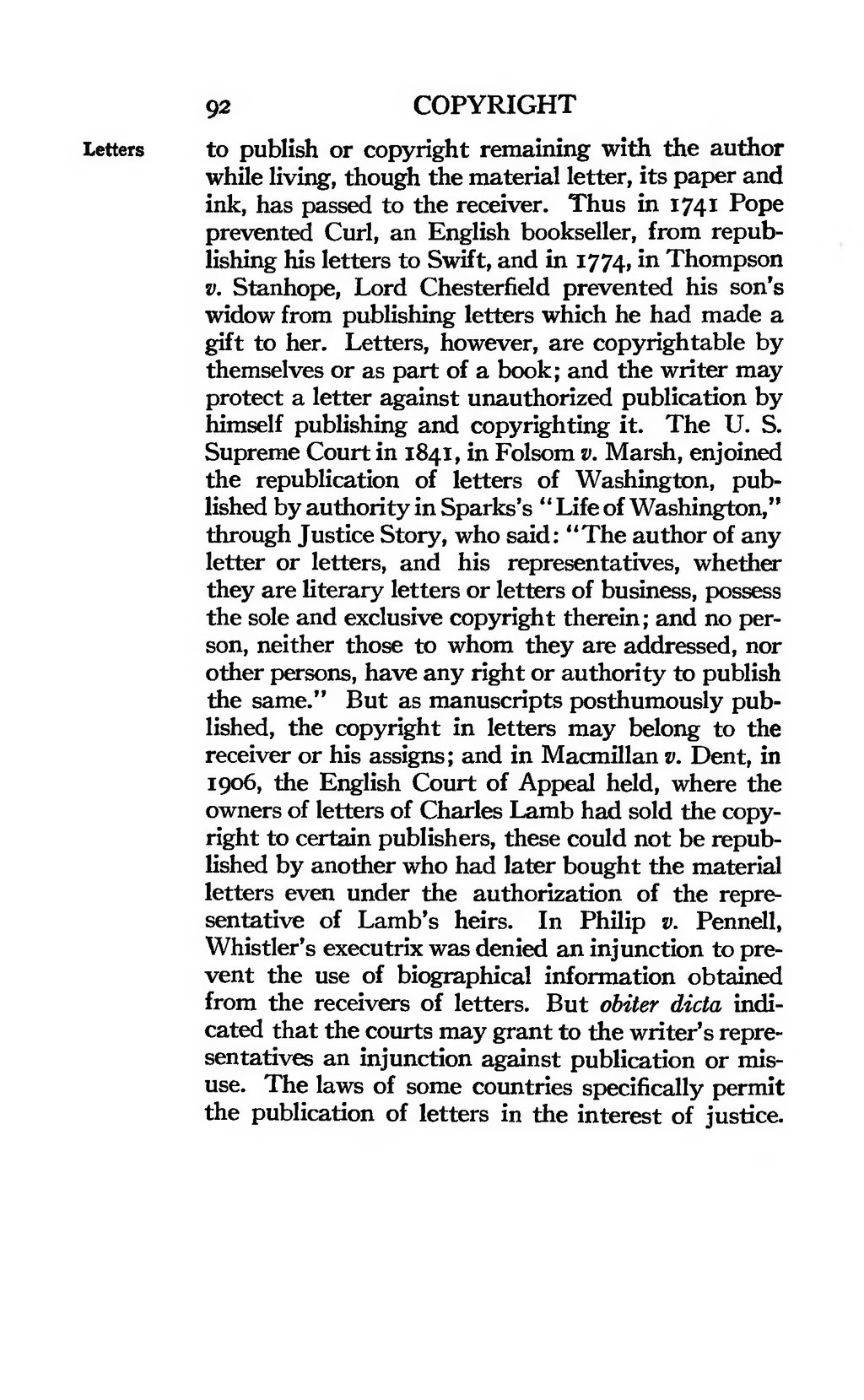Lettersto publish or copyright remaining with the author while living, though the material letter, its paper and ink, has passed to the receiver. Thus in 1741 Pope prevented Curl, an English bookseller, from republishing his letters to Swift, and in 1774, in Thompson v. Stanhope, Lord Chesterfield prevented his son's widow from publishing letters which he had made a gift to her. Letters, however, are copyrightable by themselves or as part of a book; and the writer may protect a letter against unauthorized publication by himself publishing and copyrighting it. The U.S. Supreme Court in 1841, in Folsom v. Marsh, enjoined the republication of letters of Washington, published by authority in Sparks's "Life of Washington," through Justice Story, who said: "The author of any letter or letters, and his representatives, whether they are literary letters or letters of business, possess the sole and exclusive copyright therein; and no person, neither those to whom they are addressed, nor other persons, have any right or authority to publish the same." But as manuscripts posthumously published, the copyright in letters may belong to the receiver or his assigns; and in Macmillan v. Dent, in 1906, the English Court of Appeal held, where the owners of letters of Charles Lamb had sold the copyright to certain publishers, these could not be republished by another who had later bought the material letters even under the authorization of the representative of Lamb's heirs. In Philip v. Pennell, Whistler's executrix was denied an injunction to prevent the use of biographical information obtained from the receivers of letters. But obiter dicta indicated that the courts may grant to the writer's representatives an injunction against publication or misuse. The laws of some countries specifically permit the publication of letters in the interest of justice.
